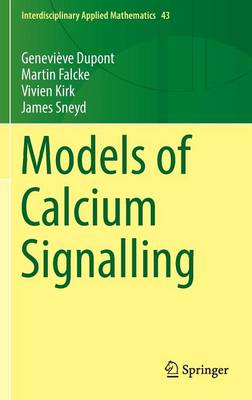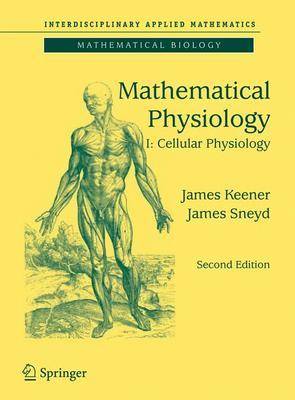Interdisciplinary Applied Mathematics
1 primary work • 2 total works
Book 43
Models of Calcium Signalling
by Genevieve Dupont, Martin Falcke, Vivien Kirk, and James Sneyd
This book discusses the ways in which mathematical, computational, and modelling methods can be used to help understand the dynamics of intracellular calcium. The concentration of free intracellular calcium is vital for controlling a wide range of cellular processes, and is thus of great physiological importance. However, because of the complex ways in which the calcium concentration varies, it is also of great mathematical interest.This book presents the general modelling theory as well as a large number of specific case examples, to show how mathematical modelling can interact with experimental approaches, in an interdisciplinary and multifaceted approach to the study of an important physiological control mechanism.
Genevieve Dupont is FNRS Research Director at the Unit of Theoretical Chronobiology of the Universite Libre de Bruxelles; Martin Falcke is head of the Mathematical Cell Physiology group at the Max Delbruck Center for Molecular Medicine, Berlin; Vivien Kirk is an Associate Professor in the Department of Mathematics at the University of Auckland, New Zealand; James Sneyd is a Professor in the Department of Mathematics at The University of Auckland, New Zealand.
8/1
Divided into two volumes, the book begins with a pedagogical presentation of some of the basic theory, with chapters on biochemical reactions, diffusion, excitability, wave propagation and cellular homeostasis. The second, more extensive part discusses particular physiological systems, with chapters on calcium dynamics, bursting oscillations and secretion, cardiac cells, muscles, intercellular communication, the circulatory system, the immune system, wound healing, the respiratory system, the visual system, hormone physiology, renal physiology, digestion, the visual system and hearing.
New chapters on Calcium Dynamics, Neuroendocrine Cells and Regulation of Cell Function have been included.
Reviews from first edition:
Keener and Sneyd's Mathematical Physiology is the first comprehensive text of its kind that deals exclusively with the interplay between mathematics and physiology. Writing a book like this is an audacious act!
-Society of Mathematical Biology
Keener and Sneyd's is unique in that it attempts to present one of the most important subfields of biology and medicine, physiology, in terms of mathematical "language", rather than organizing materials around mathematical methodology.
-SIAM review

